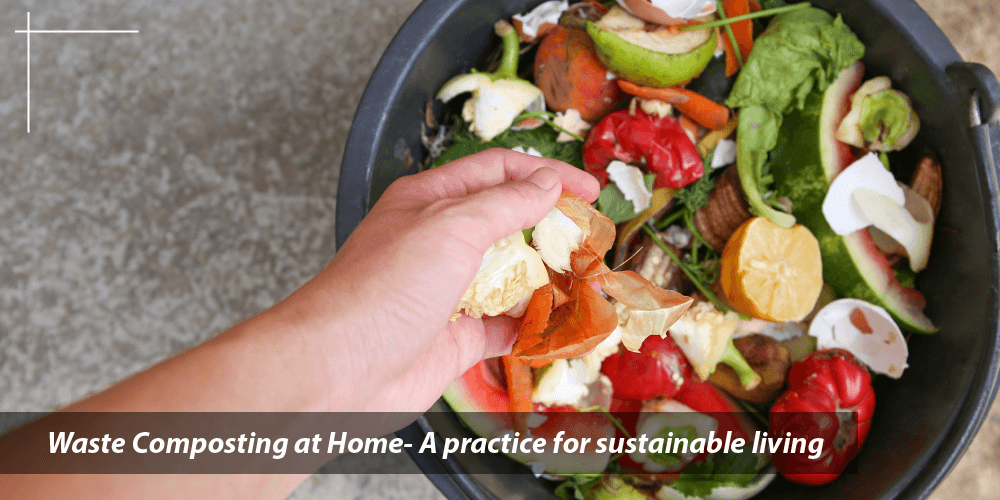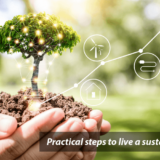Aakruthi Properties
Waste Composting at Home- A practice for sustainable living
June 25, 2022

Looking for an easy way to reduce food waste? What about something that can help the environment and even enrich the soil for the plants in your garden?
Reusing leftover food to make swill is an elegant and simple solution with some positive benefits. It reduces greenhouse gases, helps green your community, and your plants will be hooked on their abundant nutrients!
Does it sound attractive? Let’s take a closer look at how to turn waste into an environmental asset. Why do you want to remeasect food waste? There are two convincing reasons for holding kitchen waste.
The first is that eternal food waste has a very harmful impact on our environment.
As a deserted amount of food in the landscape, this provides a powerful greenhouse gas in the atmosphere like methane. This contributes to great contributions to global warming. The second reason is an organic substance that is an important part of the food waste, updating and rejuvenating the discharged soil. Food waste recycling for home gardens was practised for Millenia. But the city’s apartment was not always a choice.
Today’s world, even if you don’t have your own garden, many communities offer pick-up service in residential areas, and bins for organic waste are available in many multifamily wheelbuilding . As soon as it is processed, you can use the cities and cities using family, regional gardens, environmental groups, horticultural schools and local governments. So we reduce waste as individuals and are environmentally friendly positive ways to our community. And if you plan a garden or planting some containers, compost will add your floor to a healthy natural nutrient.
Compost is composed of decomposed organic matter. Rich in nutrients, it is useful as a fertiliser, soil conditioner, and natural crop protectant, providing an important humus soil for the soil. Humus is the main organic constituent of soil and peat.
The composting cycle layers a wide variety of natural materials that are usually considered waste. Over time, moisture and heat degrade these materials, turning them into rich black soils. This is a valuable product that is respected by home gardeners, landscape architects, gardeners and organic farmers. There are two main composting methods known as hot and cold. Hot ways are the fastest to produce humus for several weeks or months. This is due to a consistent high temperature achieved by mixing the high tinylic material with high carbon mixing. However, this method also requires internal temperature, regular rotation and sufficient space monitoring to achieve ideal conditions. A much easier but slow, cold way, use both brown waste and green waste laminated on the stack while being available.
Four kitchen methods
1. Mix it
Easy tricks are to use your mixer to accelerate food waste degradation. The mixer breaks down waste into slurry, which can be added to a larger garden expert or outdoor tumbler for the next faster decay rate. If there is no permanent outdoor bin system, compost tumbler will make an excellent alternative. Compact size is a practical option for small spaces. To protect your blender blades, avoid anything that could cause damage, such as avocados or mango pits.
2. Dustbins
The easiest way to collect garbage is to use the trash can attached to the top. Just find a bucket with a lid that fits perfectly on your countertop and add your daily leftovers. If you use the humus soil yourself, put it in a large outdoor container or tumbler on a regular basis. Alternatively, hand over the leftovers collected at your local organic waste collection point. By emptying every day, the odour shouldn’t be a problem. However, if the remaining fruits and vegetables are left on the counter for several days, use a container with a tight lid or a container with a charcoal filter. You also need a sturdy handle to carry it outdoors. It must also be hand or dishwasher washable. Suitable materials for table buckets are BPA-free plastic, ceramic, or stainless steel. Most kitchen scraps are very moist and wood products should be avoided. Plus, if it gets noticeable on the countertop, you also want something that looks attractive!
3. Freeze and discard
For those who simply want to reduce food waste without using compost in the yard, a simple solution is to put the leftovers in the freezer until the collection date. This way, your countertop remains empty and you can’t see the leftovers. To make things even easier, use a biodegradable garbage bag that fits directly from the freezer into the collection bin. Or, if necessary, use the leftovers to make a vegetable broth, drain and add to the freezing collection bag.
4. Worm farm
If you really want to enjoy a constant supply of compost, worm farms offer some serious humus production. In this method, also known as vermicompost, earthworms eat leftovers and return them in the form of nutrient-rich earthworm droppings. They also aerate the soil while feeding and digging. By deliberately adding them to the leftovers, you can duplicate and speed up what’s happening in the outdoor trash can, but in a small controlled environment. Stackable worm farm kits take up very little space. Once started, the hummus will be supplied in a stable manner. Now that you know what to compost and how to compost, do you want to start reusing leftovers?
Now that you know what to compost and how to compost, do you want to start reusing leftovers?
It’s easy to get started and is a great practice to teach your child.
Whether you compost for your own yard or ship leftovers for community pickup, our planet and atmosphere will reduce the amount of food waste going to landfill


